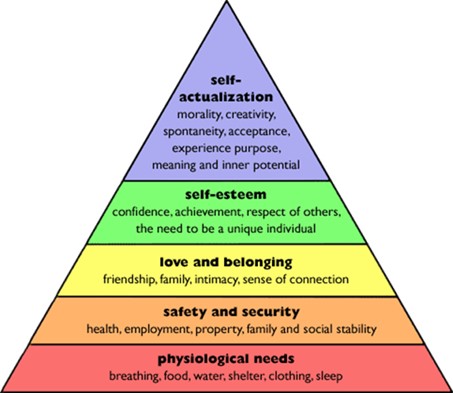Motivation is a person's willingness or enthusiasm to do something — their reasons for acting or behaving in a particular way and willingness to do something. Everything from better pay to social status or even fear can motivate employees in work situations.
Directing, developing and changing people's behaviour is part and parcel of being a leader, and motivation is the main driver. The more motivated your team is, the more capable it is of meeting business goals. Whatever your profession, be it a corporate role or running anything from a gardening business to a pet care company, being a good leader requires an understanding of motivation.
Each employee has experiences, goals and preferences that motivate them in the workplace. To manage people, you need to understand the principles of human behaviour and the wants and needs of particular individuals. In this article, we introduce key theories to be aware of and practical strategies to implement.

Extrinsic motivation is when external rewards compel someone. In the workplace, a person may be motivated by compensation such as pay, promotion or better office space. Extrinsic motivation can also come through positive feedback or public recognition.
What is Intrinsic Motivation?
Intrinsic motivation is when someone is motivated by internal factors. They engage in activities because they are internally rewarding or satisfying. This could mean doing something for fun or because it allows them to challenge themselves.
Maslow's Hierarchy of Needs

Abraham Maslow developed his Hierarchy of Needs model in the 1940s to examine people's motivations. Our most basic needs for survival are at the bottom, working up to needs relating to belonging, respect and what he calls 'self-actualisation', or realising our full potential. Once each level of need is met, we look to achieve the next one.
Maslow thought that organisations should offer incentives to their workforce to enable them to fulfil each need and progress up the hierarchy. This model also recognised that not everyone is motivated by the same thing. Self-actualisation is a very personal motivator; therefore, a wide selection of incentives should be offered for full employee engagement.
Maslow's model has become widely used by workplace leaders and human resources staff. They can translate the pyramid into work-based issues such as healthy working conditions, non-threatening environments, job security, opportunities for promotion, and creative freedom.
Herzberg's Two-Factor Theory of Motivation
Frederick Herzberg introduced a two-factor theory of motivation in the 1950s. This model examines factors that motivate employees (motivators) and things that demotivate them if missing (hygiene factors).
Examples of motivators include:
- The job itself
- Recognition
- Promotion
- Growth
Examples of hygiene factors include:
- Pay
- Job security
- Safe working conditions
- Relationships with colleagues
According to Herzberg, we can increase motivation in three ways:
- Job enlargement – give employees a greater variety of tasks to make their work more interesting.
- Job enrichment — give employees a wider range of more interesting and challenging tasks for a greater sense of achievement.
- Empowerment — delegate power to employees so they can make more decisions regarding their working life.
What is The Psychological Contract?
The term 'psychological contract' was coined in the 1960s by Chris Argyris and refers to employee and employer perceptions of their mutual obligations towards each other. These are a set of unspoken expectations, often informal and part of the organisational culture. This concept is even more important today when employees have less job security.
Key points for you to be aware of are:
- The extent to which employers adopt people management practices will influence the state of the psychological contract.
- The contract is based on employees' sense of fairness and trust and their belief that the employer is honouring the 'deal' between them
- Where the psychological contract is positive, increased employee commitment and satisfaction positively impact performance.
As a manager, you can boost motivation by paying attention to the following:
- Communication to keep employees informed and reinforce purpose and vision.
- Employee voice.
- Role modelling commitment to the organisation and its values.
- Fair treatment of employees and support for employee well-being.
Bring Clarity to the Workplace
A lack of clarity will always demotivate people. Prevent it from happening by doing the following:
- Write a short, snappy mission statement that everyone can easily understand and remember.
- If there are policies in place that are not enforced, bring them back into use. Make sure they are enforced consistently and fairly.
- Communicate regularly. Highlight goals that are set and those that are met, as well as any new policies.
Challenge People
Give employees and teams opportunities to push themselves, feel pride in their work and be part of a team with a common purpose.
- Encourage people to enhance their roles by learning new skills, taking risks, and stretching beyond their full potential.
- Align roles with strategic goals so everyone can see how their daily work impacts a business's overall objectives. Knowing their impact on success can be a great motivator to raise their game at work.
- Create a safe space to share or learn from failures and further opportunities for success.
Create a Climate of Support

Remember that actions speak louder than words, and your actions can encourage or discourage motivation.
- Communicate daily with team members, even if only to say a friendly 'hello'. Don't forget that 'thank you' for a job well done is a powerful motivator.
- Meet individual team members one-on-one for updates and personal briefings, or have an 'open door' policy that enables them to come to you immediately when an issue arises.
- Provide regular employee feedback, coaching and mentoring.
If you’d like to learn more, our Human Resources Diploma Course is currently available for just £29 for a limited time (reduced from £147).





